Abstract
Bacteriological response is generally considered the best criterion for assessing the efficacy of chemotherapy in patients with pulmonary tuberculosis. The bacteriological methods most commonly used are examination of sputum smears for tubercle bacilli, culture of bacilli from sputum specimens, and drug-sensitivity tests on positive cultures. Culture examination, though more sensitive than smear examination in detecting tubercle bacilli, is time-consuming and economically impracticable as a routine method in most developing countries. A study was therefore undertaken at the Tuberculosis Chemotherapy Centre, Madras, to determine the relative value of smear examination and culture examination in predicting the outcome of treatment and assessing the efficacy of chemotherapeutic regimens in 515 patients (all with bacteriologically confirmed disease and isoniazid-sensitive organisms on admission) receiving isoniazid, alone or with sodium PAS. The results showed that the value of smear examination of overnight sputum specimens at monthly intervals closely approached that of culture examination in assessing the progress of the patients, the percentages of correct predictions by smear and by culture being of the same order. Smear examination was slightly less effective than culture examination in detecting differences in the efficacies of regimens, but it has been estimated that this disadvantage can usually be compensated for by increasing the study population by about 20%.
Full text
PDF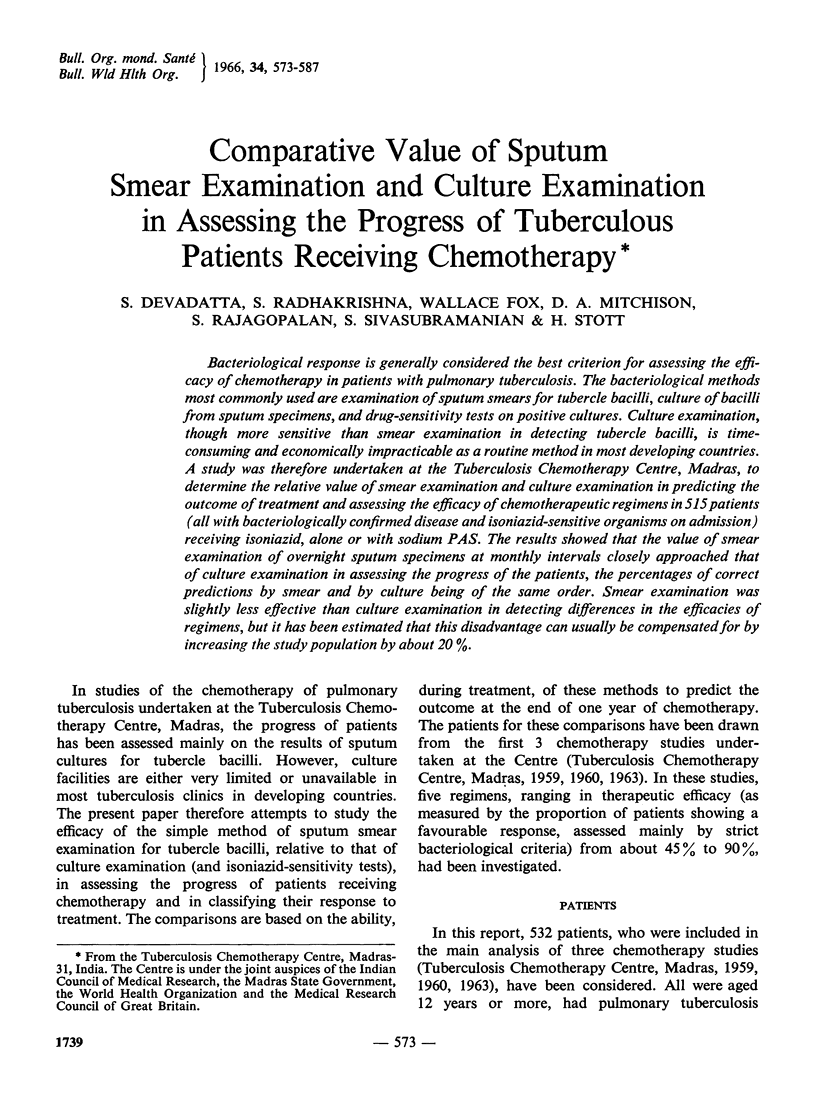
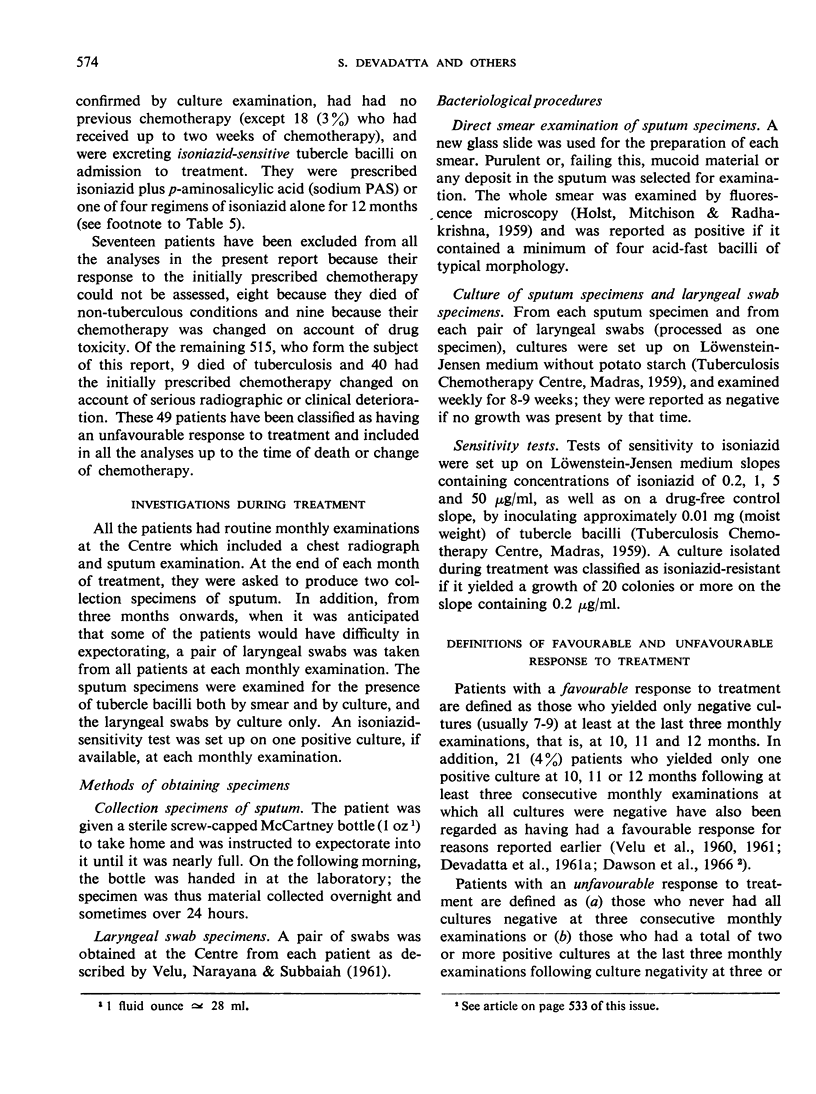
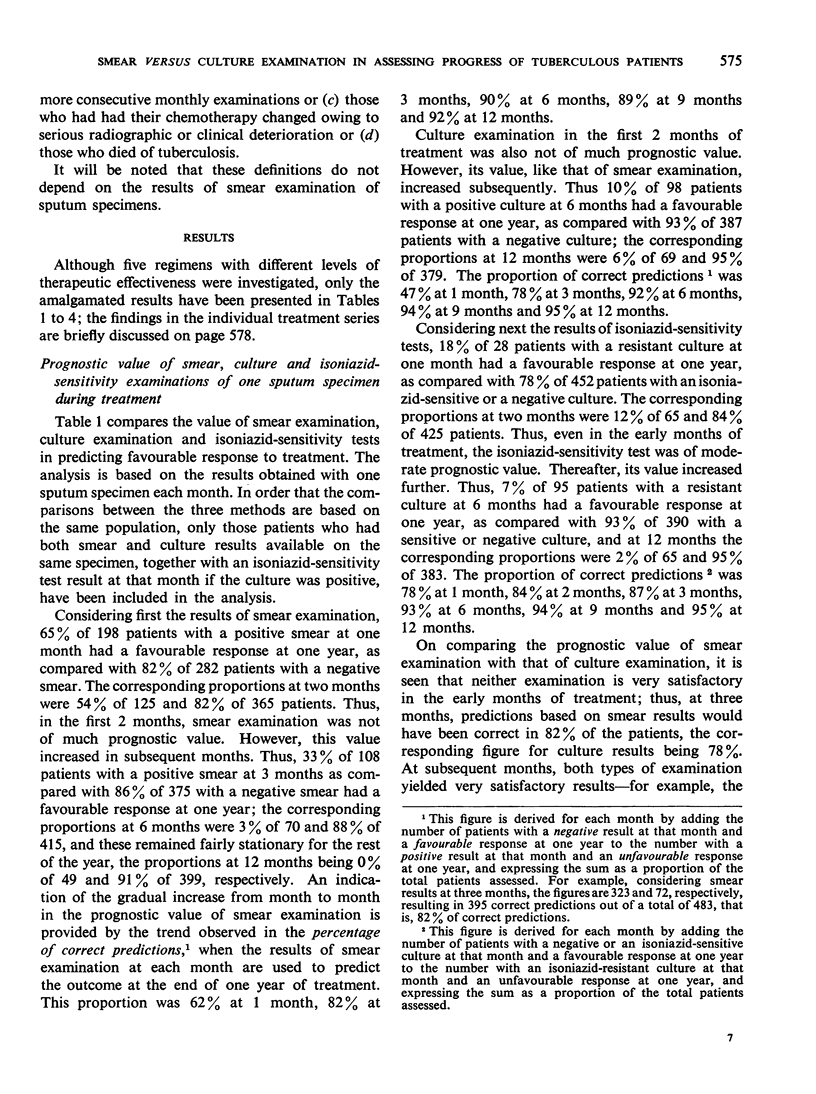
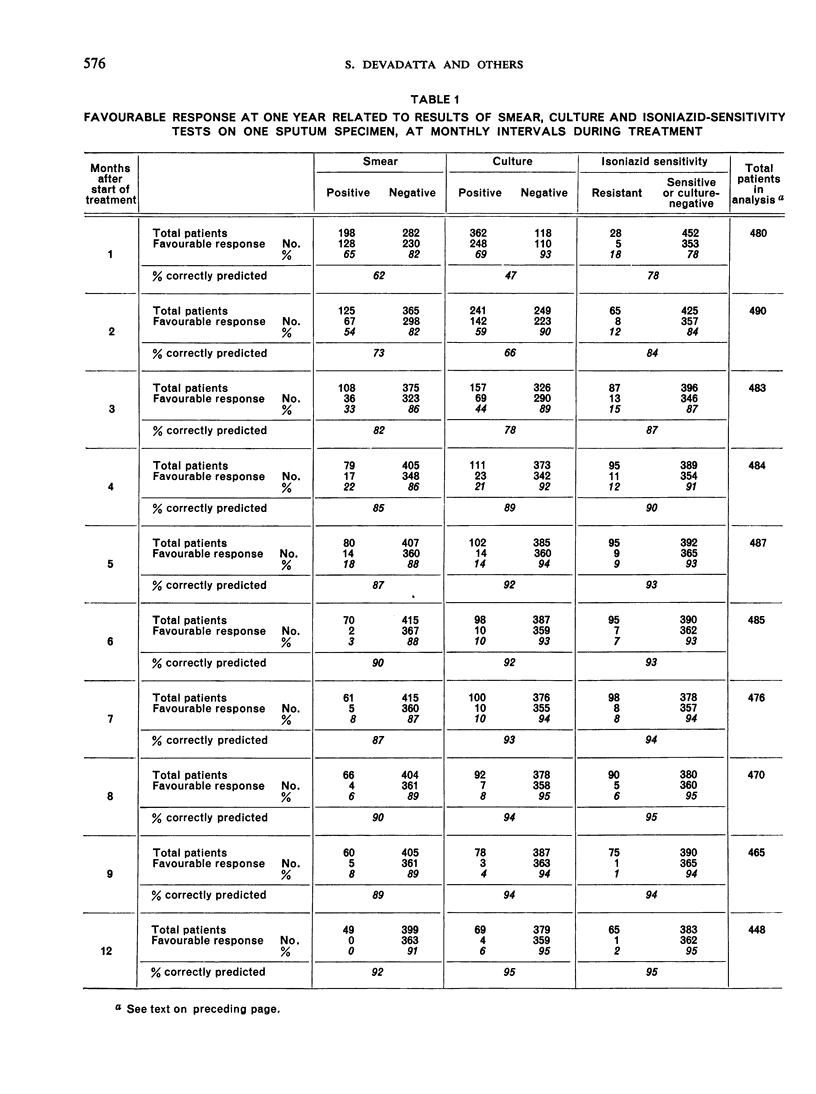
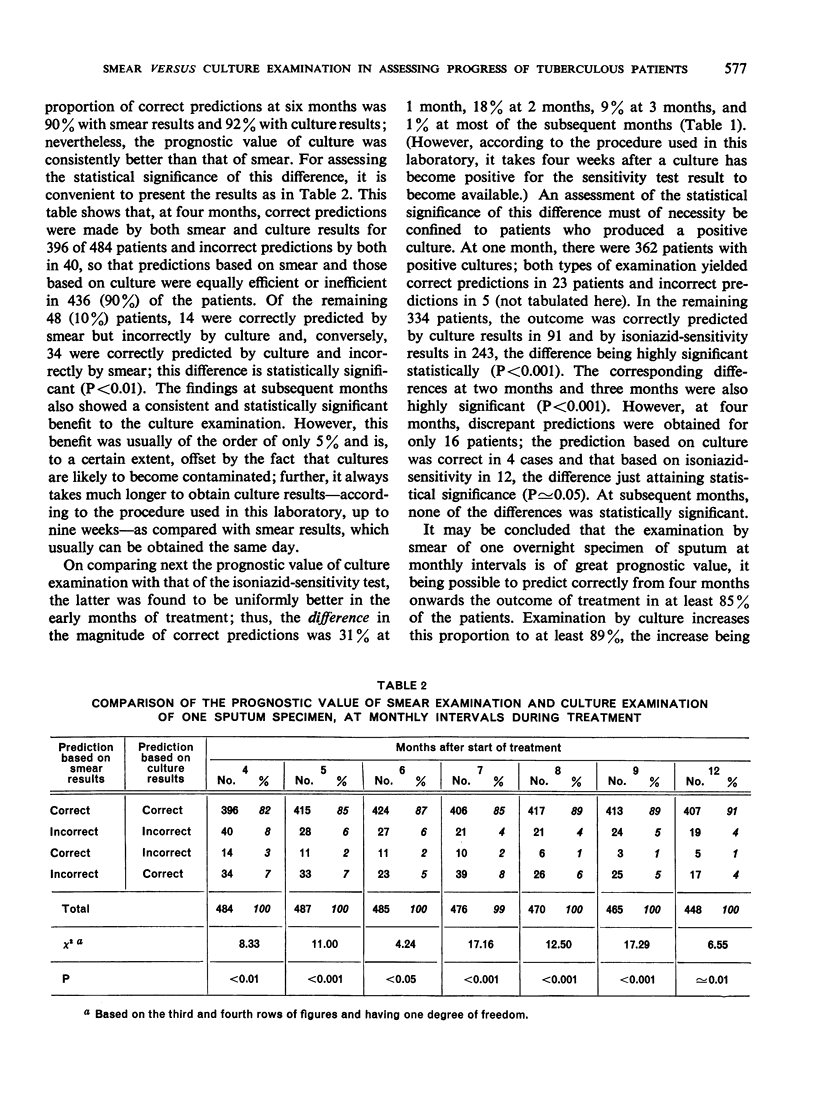
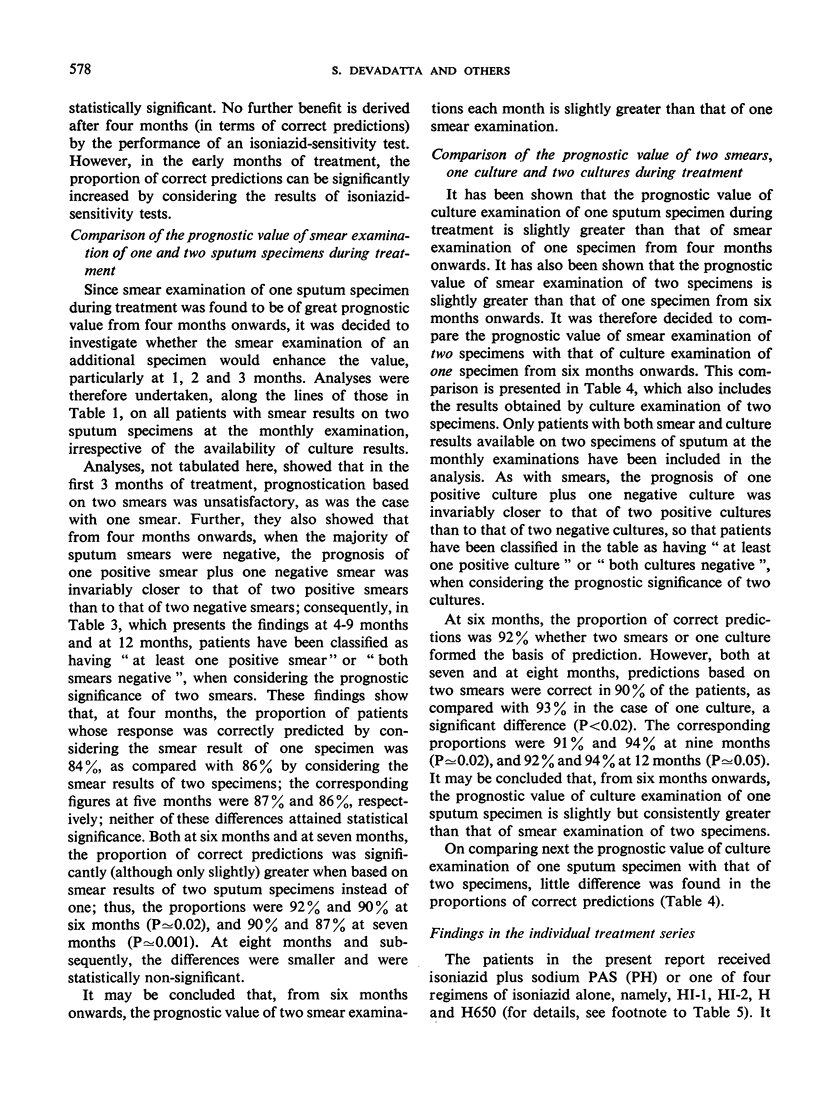
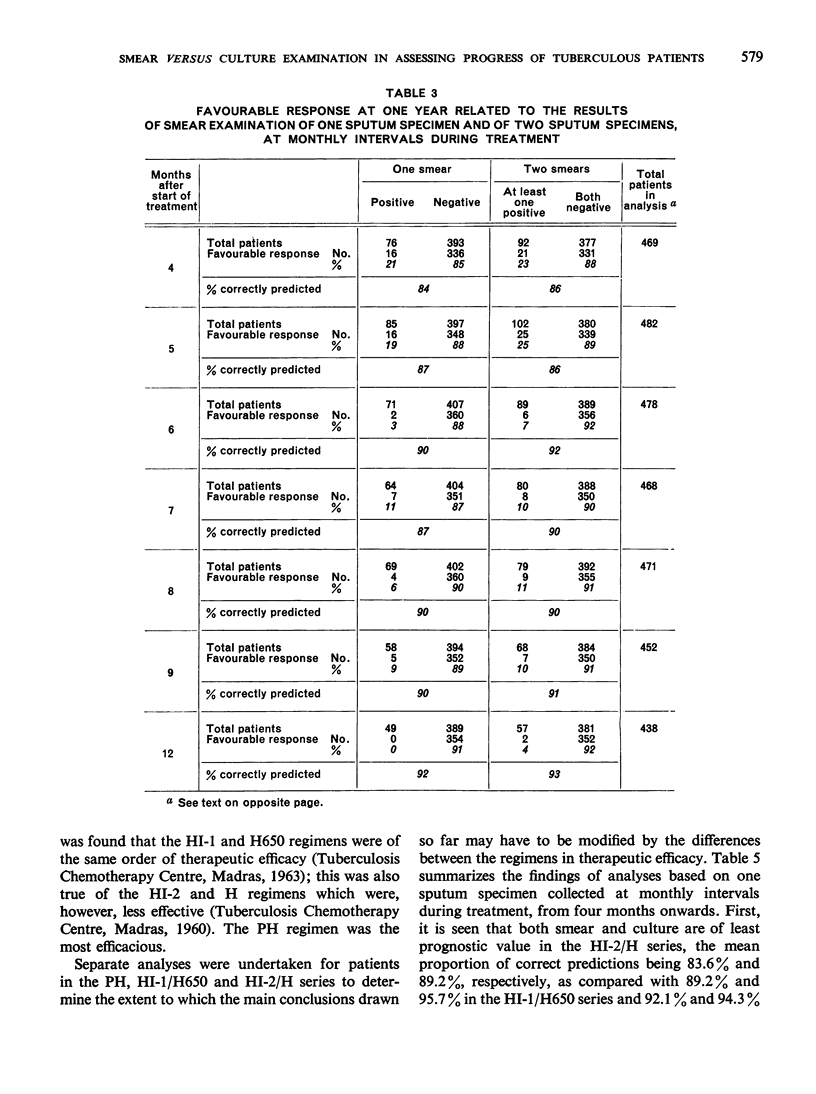

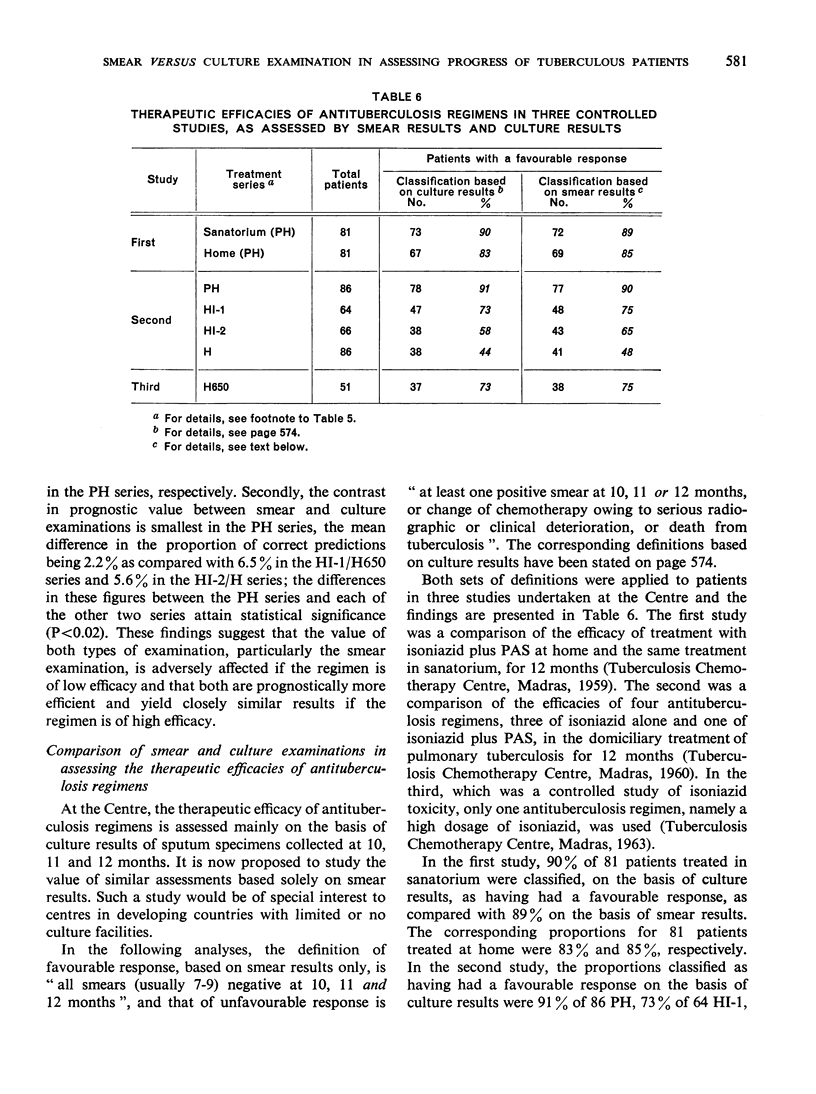
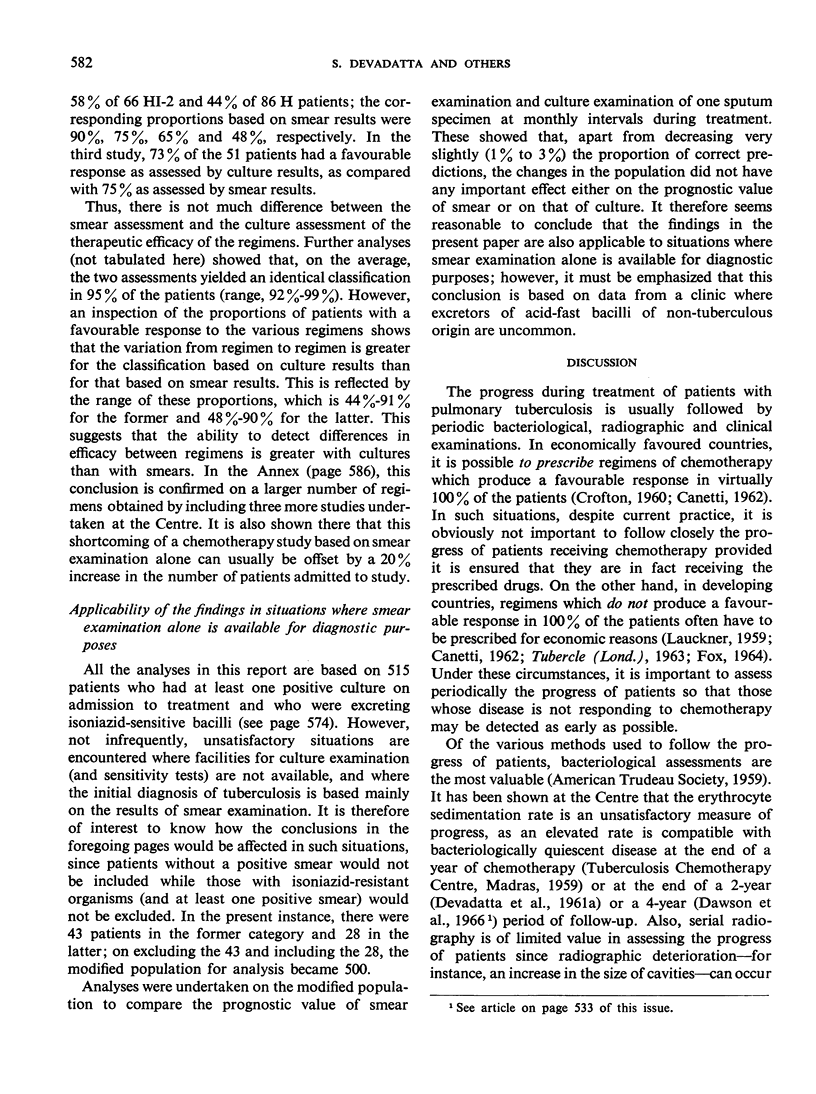
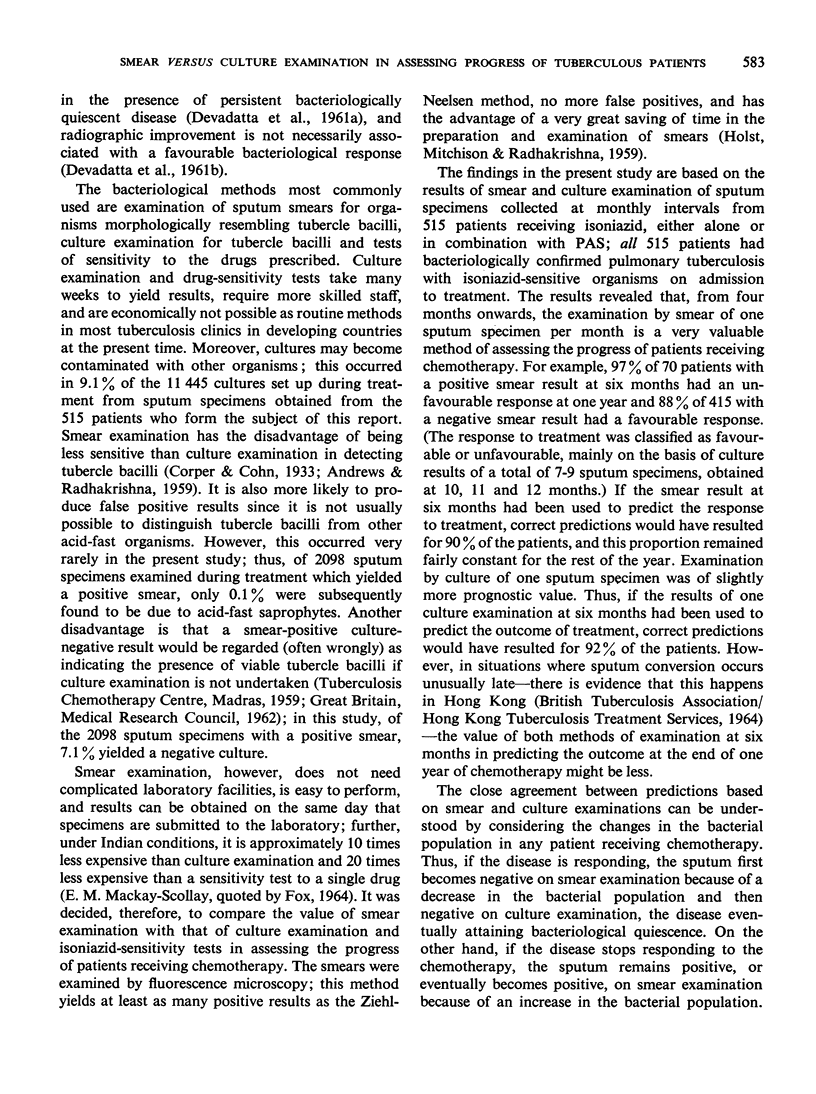
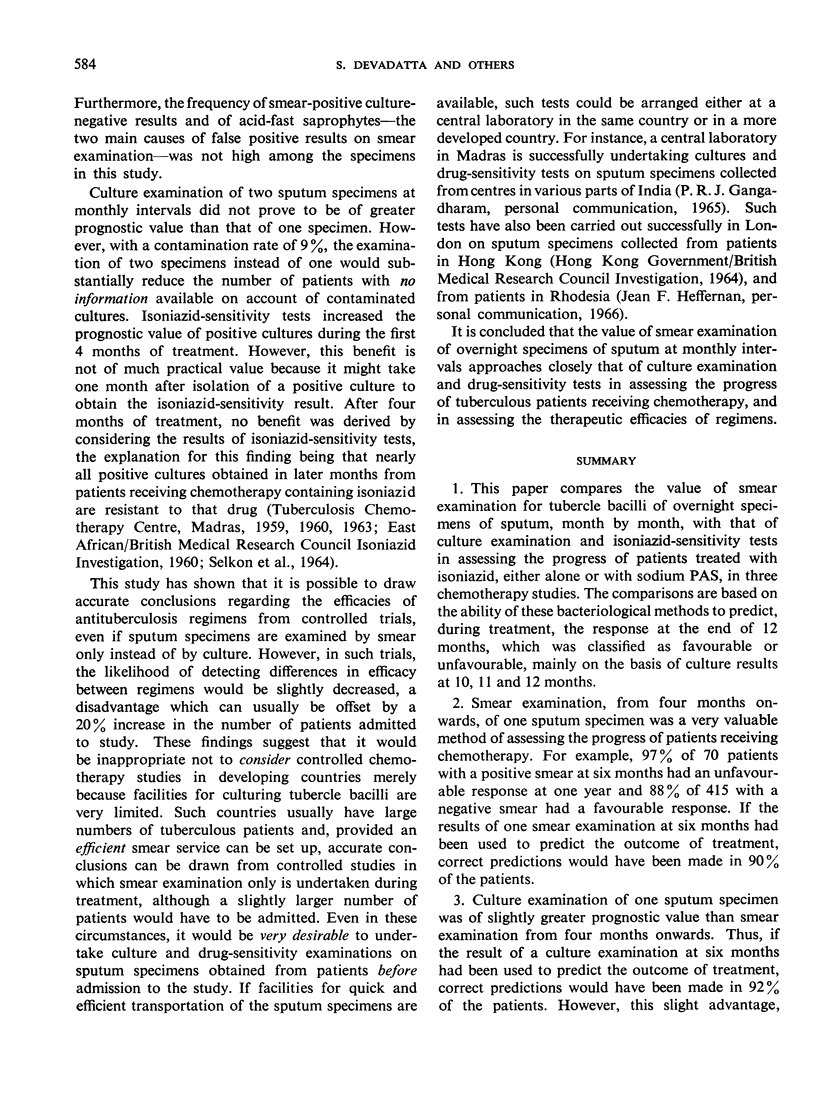
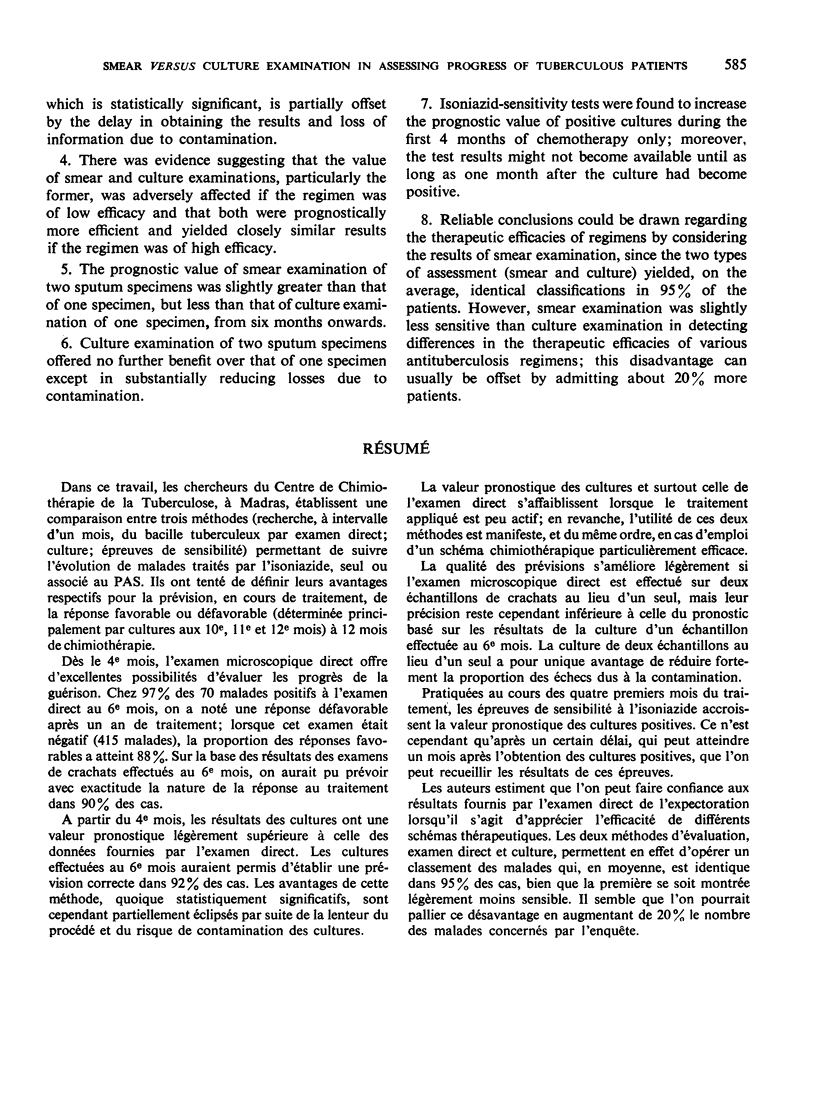
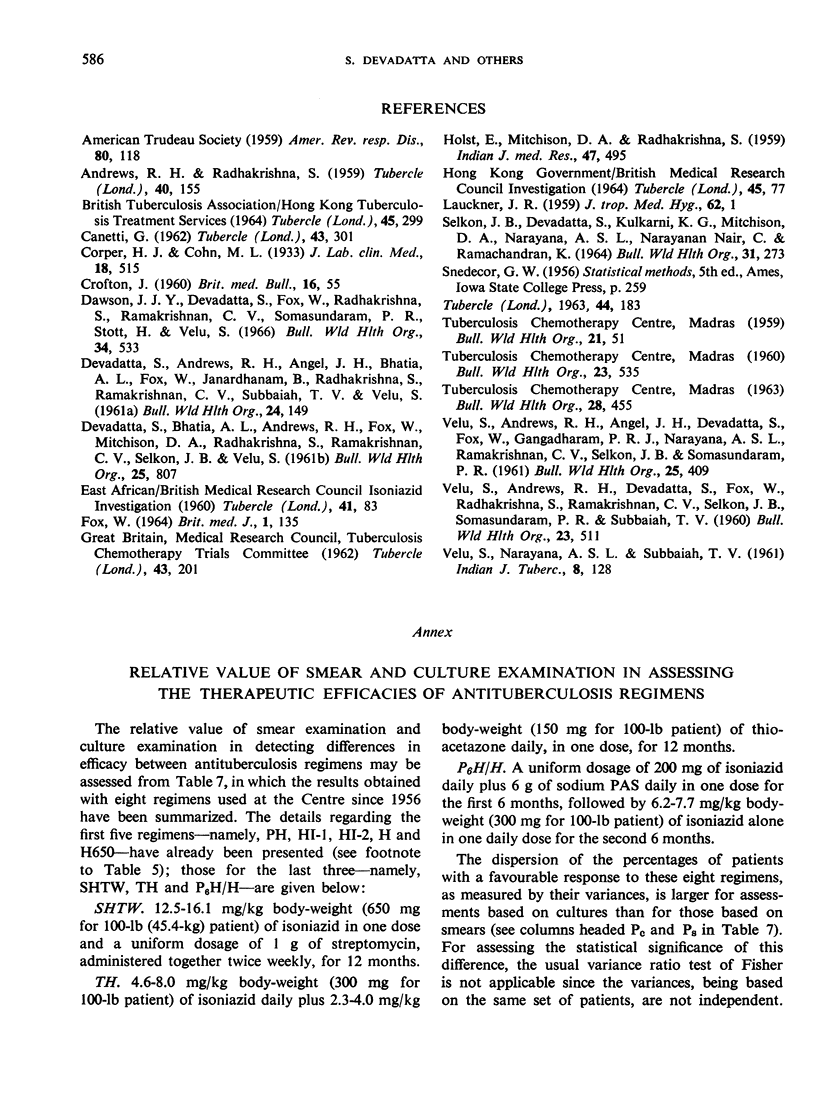
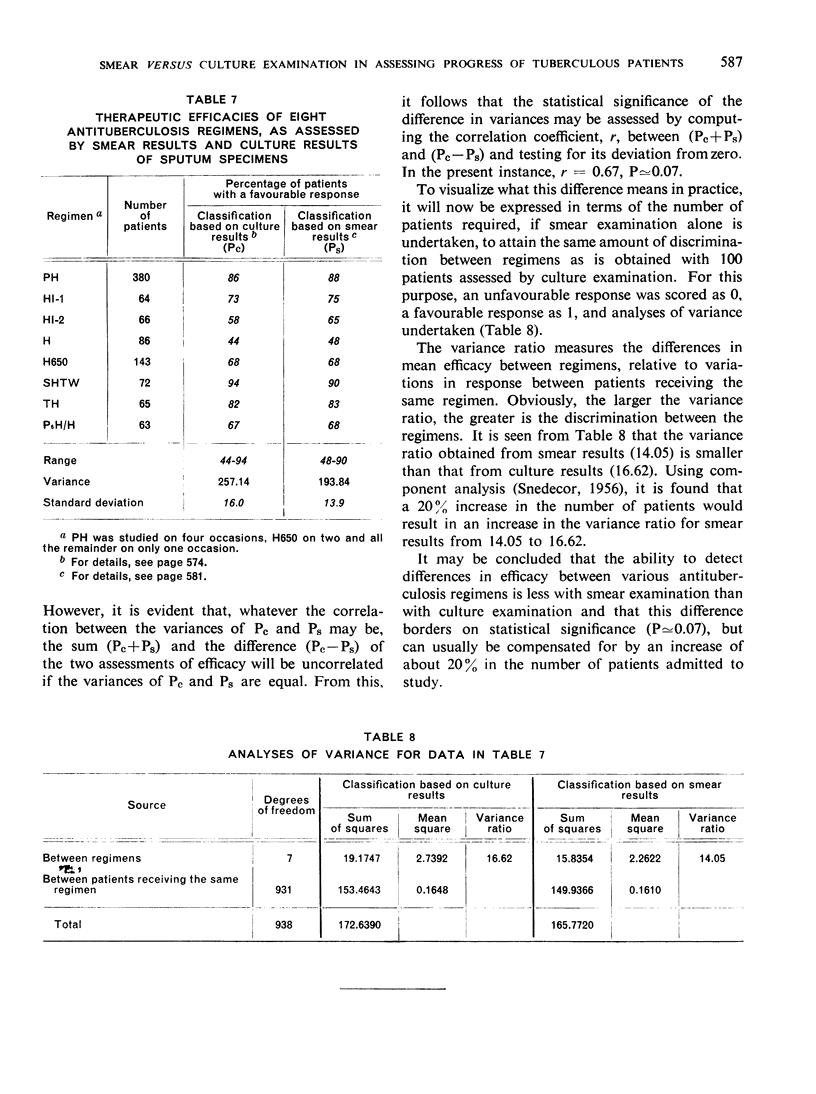
Selected References
These references are in PubMed. This may not be the complete list of references from this article.
- ANDREWS R. H., RADHAKRISHNA S. A comparison of two methods of sputum collection in the diagnosis of pulmonary tuberculosis. Tubercle. 1959 Jun;40:155–162. doi: 10.1016/s0041-3879(59)80034-9. [DOI] [PubMed] [Google Scholar]
- CROFTON J. The chemotherapy of tuberculosis. With special reference to patients whose bacilli are resistant to the standard drugs. Br Med Bull. 1960 Jan;16:55–60. doi: 10.1093/oxfordjournals.bmb.a069793. [DOI] [PubMed] [Google Scholar]
- DEVADATTA S., ANDREWS R. H., ANGEL J. H., BHATIA A. L., FOX W., JANARDHANAM B., RADHAKRISHNA S., RAMAKRISHNAN C. V., SUBBAIAH T. V., VELU S. Progress in the second and third years of patients with quiescent pulmonary tuberculosis after a year of chemotherapy at home or in sanatorium, and influence of further chemotherapy on the relapse rate. Bull World Health Organ. 1961;24:149–175. [PMC free article] [PubMed] [Google Scholar]
- DEVADATTA S., BHATIA A. L., ANDREWS R. H., FOX W., MITCHISON D. A., RADHAKRISHNA S., RAMAKRISHNAN C. V., SELKON J. B., VELU S. Response of patients infected with isoniazid-resistant tubercle bacilli to treatment with isoniazid plus PAS or isoniazid alone. Bull World Health Organ. 1961;25:807–829. [PMC free article] [PubMed] [Google Scholar]
- Dawson J. J., Devadatta S., Fox W., Radhakrishna S., Ramakrishnan C. V., Somasundaram P. R., Stott H., Tripathy S. P., Velu S. A 5-year study of patients with pulmonary tuberculosis in a concurrent comparison of home and sanatorium treatment for one year with isoniazid plus PAS. Bull World Health Organ. 1966;34(4):533–551. [PMC free article] [PubMed] [Google Scholar]
- FOX W. REALISTIC CHEMOTHERAPEUTIC POLICIES FOR TUBERCULOSIS IN THE DEVELOPING COUNTRIES. Br Med J. 1964 Jan 18;1(5376):135–142. doi: 10.1136/bmj.1.5376.135. [DOI] [PMC free article] [PubMed] [Google Scholar]
- FOX W. REALISTIC CHEMOTHERAPEUTIC POLICIES FOR TUBERCULOSIS IN THE DEVELOPING COUNTRIES. Br Med J. 1964 Jan 18;1(5376):135–142. doi: 10.1136/bmj.1.5376.135. [DOI] [PMC free article] [PubMed] [Google Scholar]
- HOLST E., MITCHISON D. A., RADHAKRISHNA S. Examination of smears for tubercle bacilli by fluorescence microscopy. Indian J Med Res. 1959 Sep;47:495–499. [PubMed] [Google Scholar]
- LAUCKNER J. R. The treatment of tuberculosis in the tropics. J Trop Med Hyg. 1959 Jan;62(1):1–9. [PubMed] [Google Scholar]
- VELU S., ANDREWS R. H., ANGEL J. H., DEVADATTA S., FOX W., GANGADHARAM P. R., NARAYANA A. S., RAMAKRISHNAN C. V., SELKON J. B., SOMASUNDARAM P. R. Progress in the second year of patients with quiescent pulmonary tuberculosis after a year of domiciliary chemotherapy, and influence of further chemotherapy on the relapse rate. Bull World Health Organ. 1961;25:409–429. [PMC free article] [PubMed] [Google Scholar]
- VELU S., ANDREWS R. H., DEVADATTA S., FOX W., RADHAKRISHNA S., RAMAKRISHNAN C. V., SELKON J. B., SOMASUNDARAM P. R., SUBBAIAH T. V. Progress in the second year of patients with quiescent pulmonary tuberculosis after a year of chemotherapy at home or in sanatorium, and influence of further chemotherapy on the relapse rate. Bull World Health Organ. 1960;23:511–533. [PMC free article] [PubMed] [Google Scholar]


